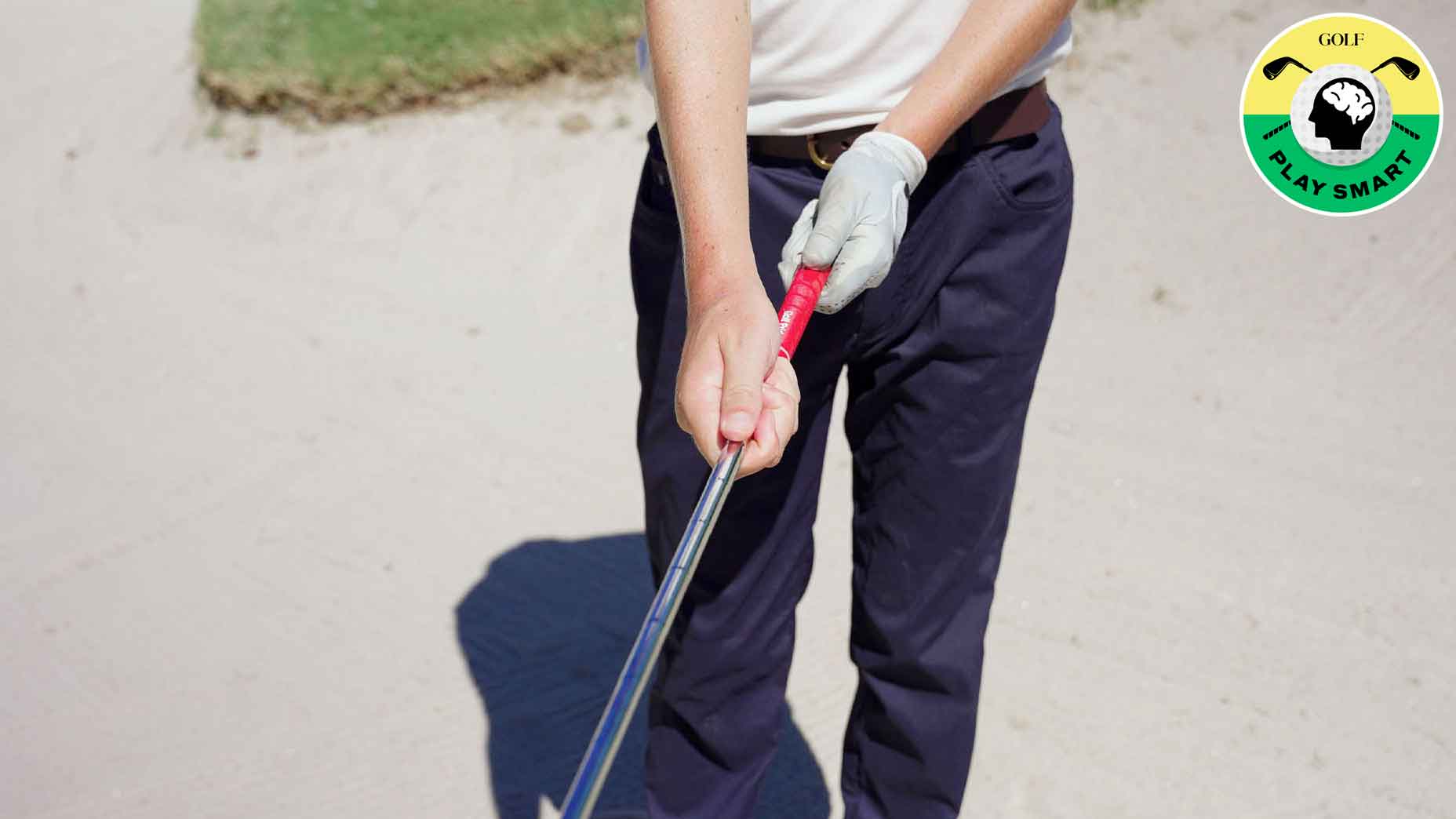 How do you hit a long bunker shot? Short-game expert breaks it down
How do you hit a long bunker shot? Short-game expert breaks it down
Four ways to blast it out of the sand like Abraham Ancer

If there’s one thing recreational golfers need to understand about the bunker swing is that it’s completely different in almost every way to a regular full swing. Not making the necessary adjustments leaves you no chance to escape. The biggest error to avoid is “driving” with your lower body to start your downswing. When you move like this, you’ll have a terrible time controlling the low point, or where the clubhead enters the sand. So long consistency.
To groove a swing you can trust in sand, copy what you see here, courtesy PGA Tour up-and-comer Abraham Ancer. The Reynosa, Mexico, native has all the right moves.
ADVERTISEMENT
1. Bend your Arm
Notice the fold in Ancer’s lead arm and the close proximity of his arm to his torso. This screams “finesse shot.” He’s not extending or pulling on the shaft; rather, he’s allowing the clubhead to smoothly pass his hands, the result of a slight “casting” motion that also slides the club under the ball. If you keep your left arm too straight, you’ll turn the clubface over too aggressively and the club will dig.
2. Weaken Your Grip
You can see that Ancer is using a slightly more neutral grip. The palm isn’t facing down—it only looks that way because, at address, he opened the clubface and then took his grip, effectively placing his hands in a weaker position. Opening the face like this engages the bounce and allows the club to slide more easily under the ball.
3. Turn Your Torso
Most people don’t know that bunker shots require a different sequence than what’s required in a regular full-swing shot. Notice how Ancer’s torso is turning over the top of his lower body. He’s not driving with his legs, and his hips are facing more toward the ball with his shoulders facing left of target. Here’s your proof that in solid bunker swings the upper body out-rotates the lower.
4. Maintain Knee Flex
One of the reasons Ancer’s upper body rotates more than his hips is because he maintains a lot of knee flex. Instead of driving through with his legs, he’s staying soft and staying low. This lowers the hands at address, helps engage the wrists and keeps the lower body stable and quiet. Copy this and you’ll never miss.
To receive GOLF’s all-new newsletters, subscribe for free here.
ADVERTISEMENT






